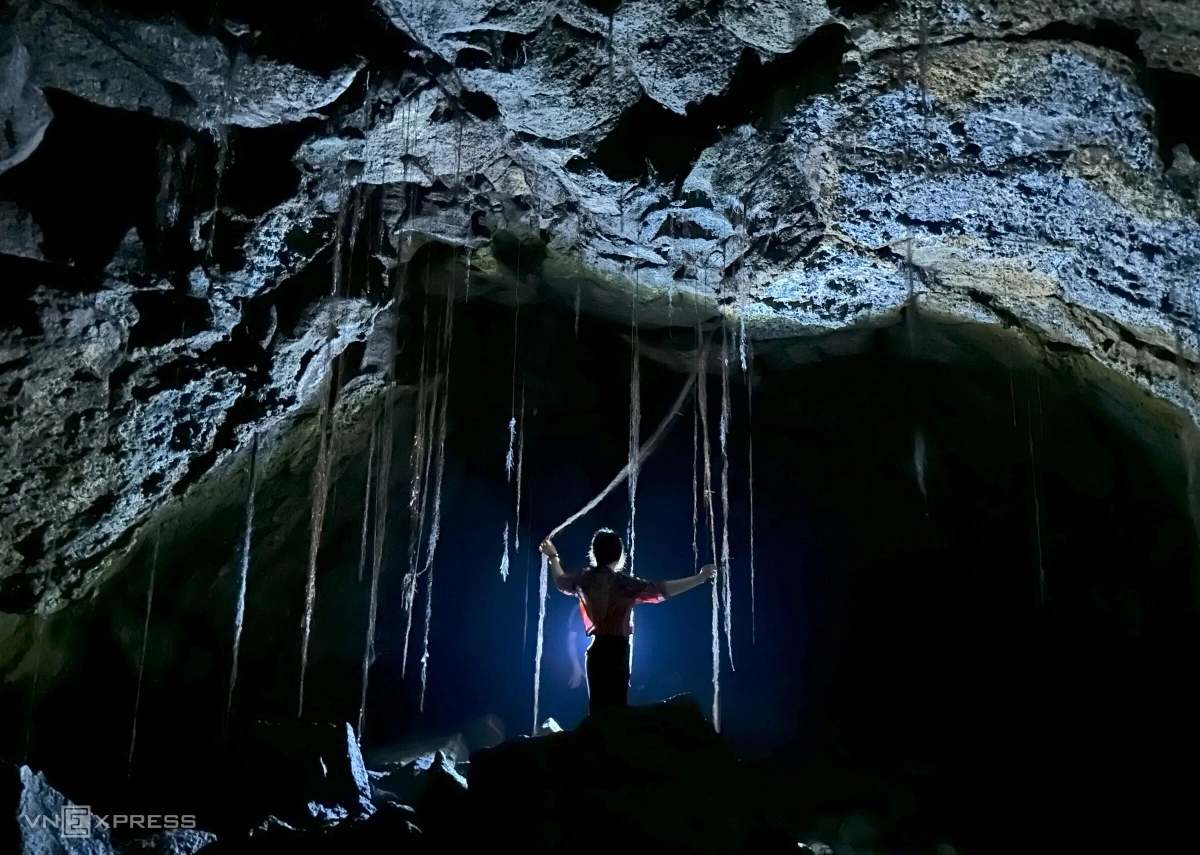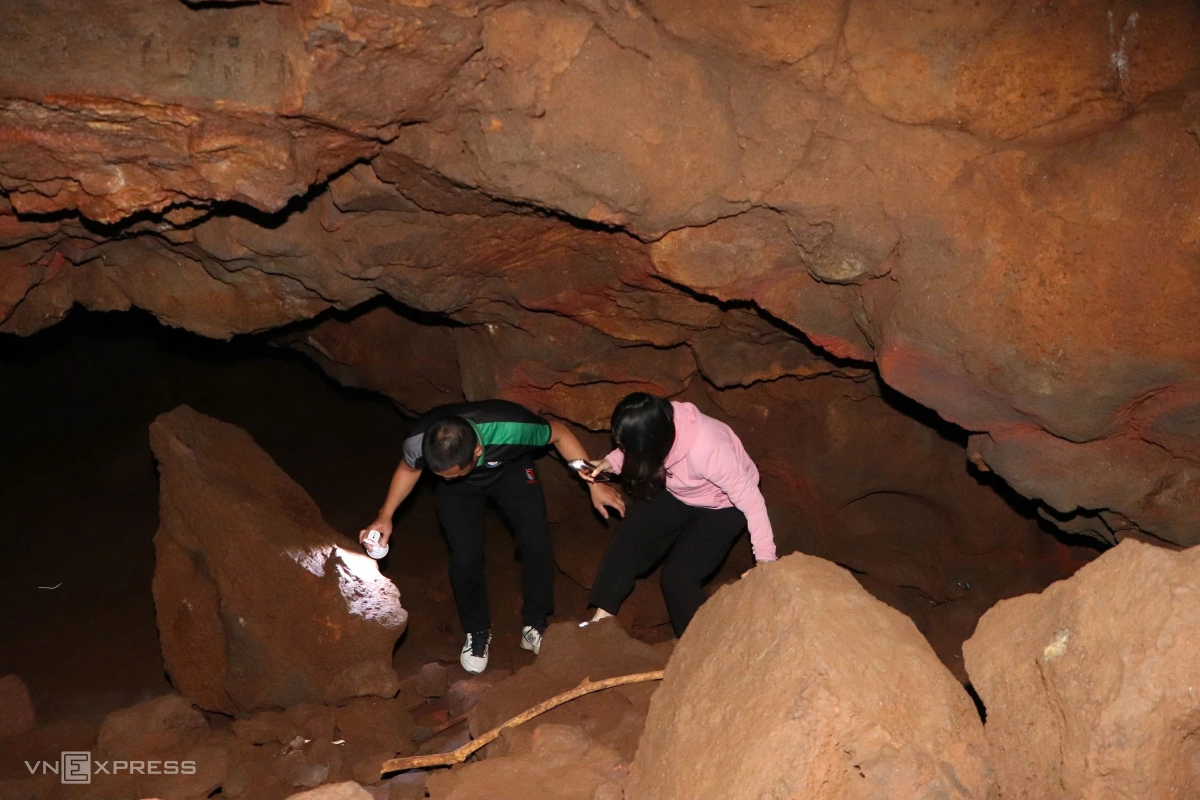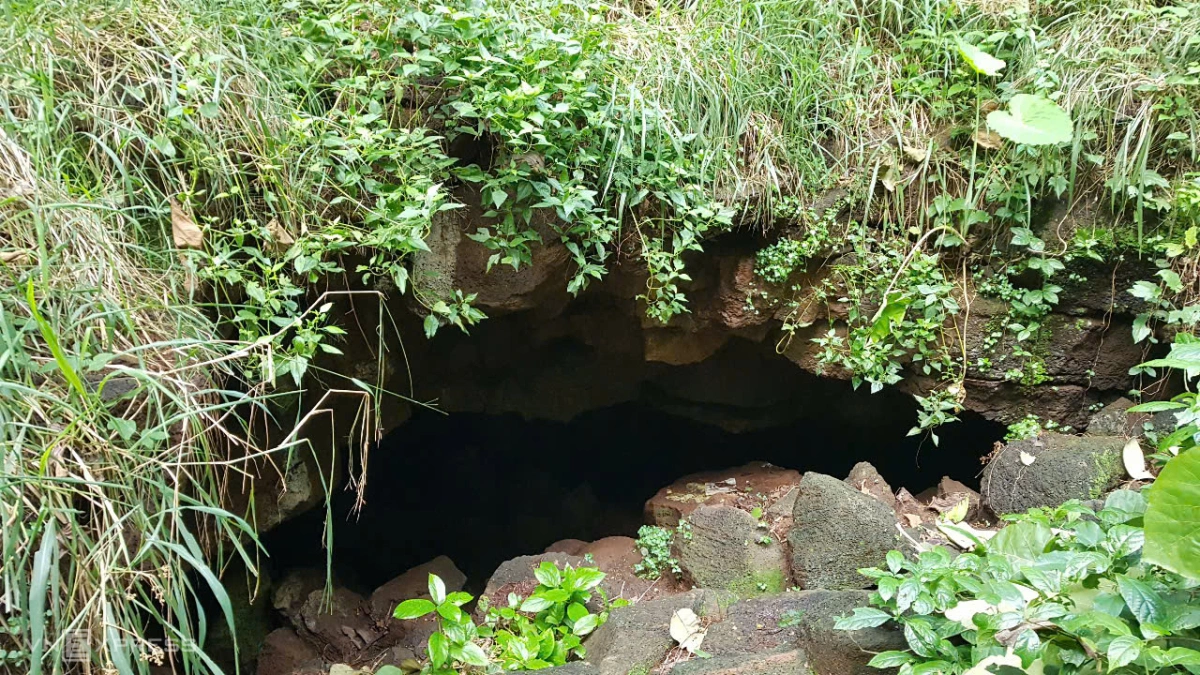About 120 kilometers from Ho Chi Minh City, along National Highway 20 lies a volcanic cave system discovered 10 years ago beneath a teak forest in Tan Phu and Dinh Quan districts of Dong Nai Province. Recently, these caves have garnered attention and become a destination for travelers.
Spanning approximately 200 meters in length, 6 meters in width, and 3 meters in height, the passage forms a solid and imposing vault. To navigate its depths, visitors must rely on flashlights.
Since the cave remains untouched, the entrance is challenging to navigate, with rocky terrain. Natural light barely penetrates beyond the entrance.
Geologists estimate that the cave system was formed around 15 million years ago following a series of volcanic eruptions. The walls showcase intricate rock formations, with patterned ridges that resemble ancient carvings.
Deeper inside, the cave becomes a sanctuary for bats, earning it the local name "Bat Cave". Unlike many other bat dwellings, this one does not have the strong odor.
Another section of the cave features a narrow passage, just wide enough for a single person to pass through, leading to a space where tree roots descend from above.
Visitors often describe the experience as venturing through a "tunnel", complete with rock structures and a cool climate.
The ceiling is adorned with rock formations, some shimmering with mineral deposits, resembling honeycomb patterns.
"This is my first time exploring a volcanic cave, and I'm amazed by the beauty of nature beneath these farmlands," said Lan, a visitor from Ho Chi Minh City.
The deeper one ventures into the cave, the more challenging the journey becomes, requiring visitors to squeeze through rock crevices.
At the end of the cave, the passage narrows, with small pathways leading to unexplored sections.
Tourism authorities in Dong Nai are working with travel agencies to design guided tours.















